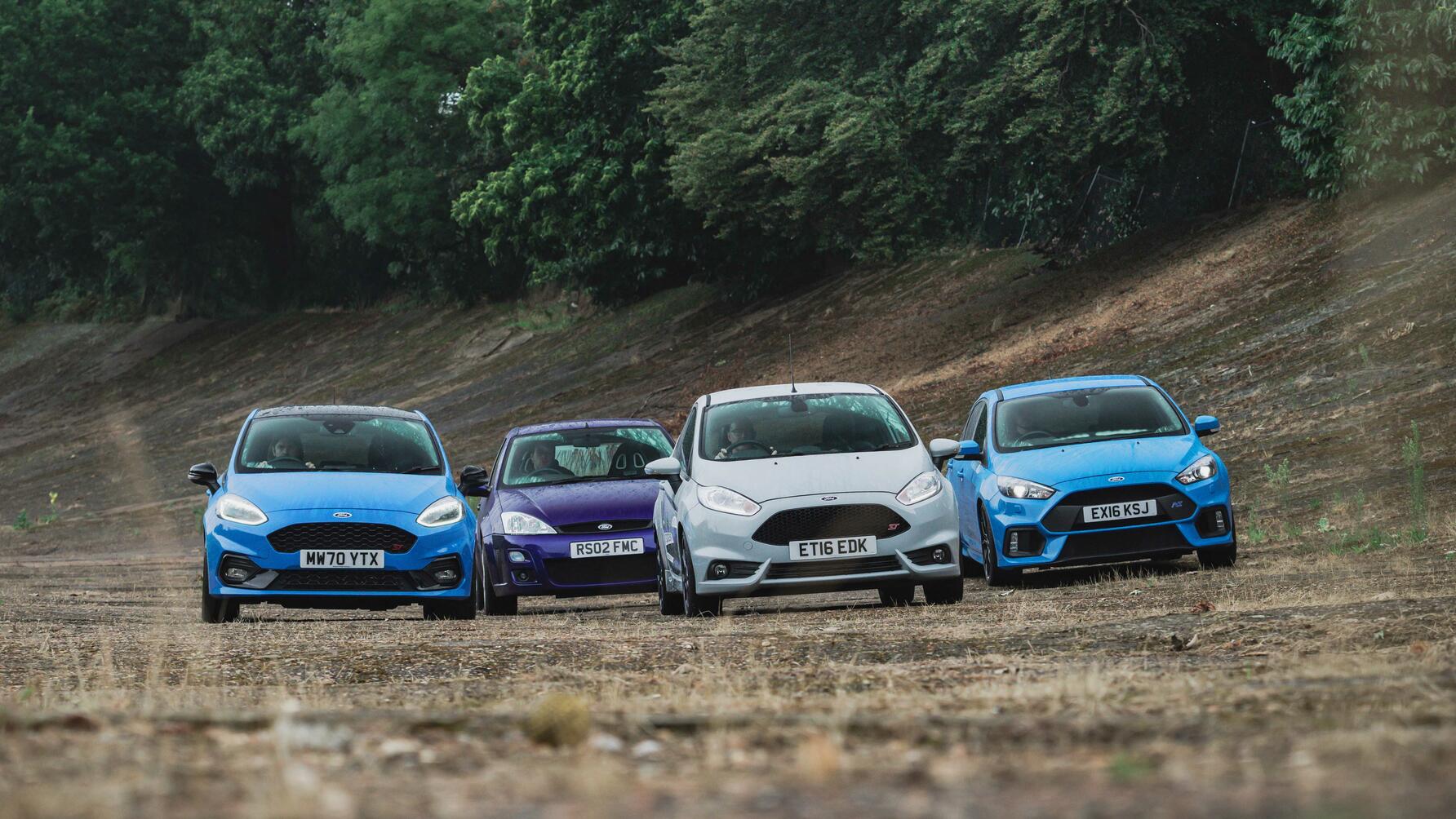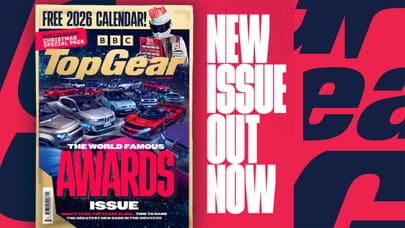
Top Gear's greatest cars of the last 30 years: Fast Fords
Ford has been graced with our Car of the Year tag seven times, and of those, four were hot hatches. This is their story
The story of the Ford hot hatch over the past 30 years doesn’t start with any of these cars. Its genesis, I’d argue, was the Puma. Or the fourth generation Fiesta. Or even the first Mondeo. All drove with a sweetness absent from any other ordinary car. They were the mid-Nineties inkling that Ford had good stuff coming down the pipe. It just needed to realise that hot hatches, insured into oblivion a decade earlier, were ripe for a comeback.
They’ve been, well, not so much coming back as coming atcha, for the past 20 years. Cars good enough to earn our ‘best car of the year’ tag four times. Oddly perhaps, I think there’s more DNA between first and last here than between any others. The final Fiesta ST goes out packing a similar punch to where the original Focus RS came in. Front-wheel drive, about 200bhp, Quaife limited-slip differential and a front end with a pitbull’s tenacity. It had gained a measure of civility, though.
Has any car ever sat better on its wheels than the 2003 Ford Focus RS? Those OZ Racing starfish alloys set the whole thing off perfectly. And tell a story. They’re clearly not generic Ford wheels. No, they’re more akin to the rims worn by the Focus WRC car campaigned by Colin McRae. And that’s because it was a rallying tribute act: Recaro seats, Sachs dampers, Quaife differential, OZ wheels, AP Racing clutch, Brembo brakes. It was more skunkworks than considered product plan and drove like that as well.
It was full on. The steering was a wrestle under power, the suspension stiff, it was a demanding machine, felt like it wanted to be tearing apart a tarmac stage. God, it was fun.
What it revealed was that while the everyday Fords were supple and fluent, the hot ones had more edge to them. That car had the most edge of all, but the 2013 Fiesta ST wasn’t far adrift. This was the hot Ford supermini we’d been wanting so badly. Its predecessor, 2005’s boxy Fiesta ST150, had fractionally pulled its punches, but Ford didn’t make that mistake with its replacement in 2013.
Personally I think the sixth-gen Fiesta ST is as good as it got. OK, it’s a stiff little tyke and doesn’t consume distance with relish, but point it at any roundabout and it knows precisely what to do: dive on in, grip like burned scrambled egg and wag a wheel in the air like it just don’t care. It is addictive. It inflicts itself on you and somewhere deep in your fun centre there’s a response over which you have no control. You’ll hoot and gurgle at the perfection with which this Fiesta ST tackles tight corners. The steering is taut, the turbocharged 1.6 willing and eager. It is so appealing.
From 2016 you could have it with a diff. As if it needed more traction. But so complete was that car that when its replacement arrived a couple of years later, I was slightly underwhelmed. It felt a fraction more artificial, the three cylinder was brilliant but the noise was piped in, the engine was slow losing revs. But even so, it was in a class of its own, a little car that knew exactly how to engage and entertain. Good enough for the Fiesta ST to earn the crown again – one of only two other cars here to win top spot more than once. One was the Honda Civic Type R, the other, obviously, was the Ford Focus RS. It had become quite a different car between 2003 and 2016, though. A generation had passed, where the Focus RS retained front drive, went muscular, but lost its sharp edge. When it came back the edge had been reinstated, but it had been achieved with artifice. This is The One With Drift Mode.
Ford, in common with just about everyone else with the exception of Honda, had realised that once you’re much above 300bhp, you need 4WD if you want to come out of corners successfully rather than visiting whatever hedge is on the outside. This had 345bhp courtesy of a 2.3-litre turbocharged EcoBoost engine from the Mustang. It was also fitted with a pair of GKN clutch packs that enabled it to vector torque rearwards and then direct all of that to whichever wheel it saw fit.
This captured everyone’s attention, with the predictable results still easily viewable on YouTube. But Drift mode was nothing more than a distraction from what was the most capable hot hatch Ford had ever built. Yeah, it could do with relaxing more, actually sinking into its spring travel a bit, and there’s that same sense of slight artifice that reoccurred in the Fiesta a couple of years later. But this is bighearted, a right laugh, always gives its all. It’s a car you build an easy rapport with because it’s always there, nudging you in the ribs and reminding you that you’re having a great time.
Top Gear
Newsletter
Thank you for subscribing to our newsletter. Look out for your regular round-up of news, reviews and offers in your inbox.
Get all the latest news, reviews and exclusives, direct to your inbox.
And that’s what all of these cars do so well and have done so consistently over most of TopGear magazine’s long lifespan. I can’t quite believe that Ford has killed off the Fiesta, that the Focus dies in a couple of years. That seems vanishingly shortsighted to me. As if Ford hasn’t bothered trying to persuade people to buy cars like this, but has instead immediately rolled over and capitulated to the crossover. Not only does that surely jar with Henry’s ‘they’ll buy what I tell ’em’ mantra (encapsulated in the ‘any colour you like, so long as it’s black’ legend of the Model T), but it means we’ll forevermore be denied the Blue Oval’s hot hatchbacks. And that’s something I’m not sure I’ll ever be resolved to.

Trending this week
- Car Review
Porsche 911 GT3 (992.2)








